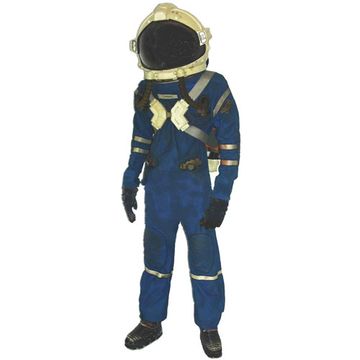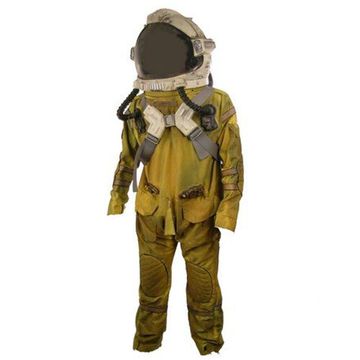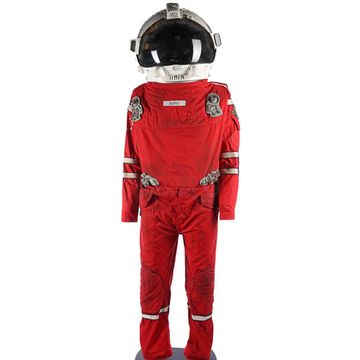Original Marshall T. O'Neil (Sean Connery) Costume
This costume is made of blue polyester workman's shirt with various patches, a metal 'marshall' badge, and an outside label reading "O'Niel" (Sean Connery's character); an inside label has a handwritten annotation reading "SC" (Sean Connery); together with a pair of matching pants, a jacket with similar insignia, a baseball cap, and a prop ID card (with a small black and white photo of Connery on it), all used by the actor as he portrayed 'Marshall William T. O'Niel' in this sci-fi film.
In the not-so-distant future, where the solar system is being slowly mined and exploited. Concessions are given to corporations by by the League of Industrial Nations and in the case of planet Io, third moon of Jupiter, it was the company Con-Amalgamate who won the franchise. The governments keep tabs on the corporations with a corp of lawmen, called Federal District Marshals.?They rotate between assignements, staying on any given site for a year and taking command of the local crew of enlisted men and NCOs.?This system’s actual balance lies in corruption : Marshals are not supposed to stir up too much troubles for the corps, and get discreetely paid in return. But unfortunately for Con-Amalgamate Marshal O’Neil (Sean Connery)is here and he is a smart man, who is not ready to let it go.
Prior to his foray into the world of designing for films, Mollo was best known for his book Military Fashion, covering the history of European and American uniforms from 1640 to 1914. It is a comprehensive view of the subject and made its author a recognised authority on uniforms. In his office at Pinewood Studios in England, Mollo sat amidst countless pairs of laceless boots in various stages of being dyed. On the walls were a variety of multi-coloured patches, each neatly labelled to symbolise the different functions of various workers. Some are obvious, such as the classic snake design indicating medical staff and crossed spanners for maintenance.
Why does Mollo prefer designing uniforms to general fashion? “Because,” he replies, “every uniform has a job that goes with it. That defines it and gives it a function. I suppose I really like it because it’s practical.”














